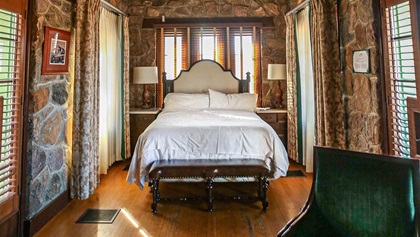Postcards: Death Valley National Park
There’s nothing there. You’ll probably like it
By Rose Hansen
When I told my dad that I was flying to Death Valley, he laughed. As a young student pilot, he crossed the Sierra Nevada in a Cessna 120 and landed at Furnace Creek. It was 1959, decades before Death Valley became a national park. “There was nobody. It was nowhere,” he said. “There’s nothing there. You’ll probably like it.”

Death Valley


Indeed. Death Valley is the largest, hottest, driest, and lowest national park in the contiguous United States. Its heart is Furnace Creek, which boasts gift shops, hotels, campgrounds, and the famed airstrip 210 feet below sea level. Aside from a few other far-flung outposts at Stovepipe Wells and Panamint Springs, the park’s allure is its splendid emptiness.
Flying in from the south, the terrain is punctuated by ephemeral rivers, pristine sand dunes, alluvial fans pouring from canyons, and Badwater Basin, a salt flat of glittering white hexagons. Upon landing at Furnace Creek, a vehicle is a must. The only rental company is Farabee Jeeps, whose off-road rigs come equipped with loaded coolers and satphones.
Choose from three hotels: the no-frills Stovepipe Wells Village Hotel; the Ranch at Death Valley; or the luxurious Inn at Death Valley. The latter is a worthy splurge. Newly renovated balcony rooms overlook its lovely oasis, a lush enclave of date palms and pomegranate shrubs. Making memories? Ask for the one-of-a-kind poolside cabana. This historic stone cabin has direct access to the iconic spring-fed pool. It’s tempting to spend your time swimming, hitting the spa, and dining on the restaurant deck as the sun sinks over the Panamint Range. Don’t. There’s too much else to see.
Front-country highlights like Artists Palette, Zabriskie Point, and Ubehebe Crater will always be there. But since you’ll have the Jeep, venture backcountry. The can’t-miss trek is Titus Canyon, a 4x4 trail of sheer cliffs and hairpin turns. After traversing the rugged Grapevine Mountains, it drops into a stunning granite slot canyon. Other epic sights include Racetrack playa, where rocks cross a dry lakebed unassisted, and eerie ruins at Chloride City.
Drive times reflect the area’s vastness, but an airplane makes one remote site uniquely accessible. In the park’s far northwestern corner is Chicken Strip, a 1,400-foot-long dirt runway. From there, it’s a quick hike to nearby hot springs, where clothing is optional. That said, you’ll likely be alone; fewer than 100 airplanes visit Chicken Springs each year, and vehicles face hours on grueling dirt roads to reach it. But that’s good. Solitude is the reason you came. Soak it up.
Rose Hansen is a pilot living in Arizona.
 Airports: Death Valley has three airports: Furnace Creek, Stovepipe Wells, and Chicken Strip. Farabee Jeeps only offers pick-up service at Furnace Creek. Bring tie-downs. No fees. No fuel.
Airports: Death Valley has three airports: Furnace Creek, Stovepipe Wells, and Chicken Strip. Farabee Jeeps only offers pick-up service at Furnace Creek. Bring tie-downs. No fees. No fuel.

